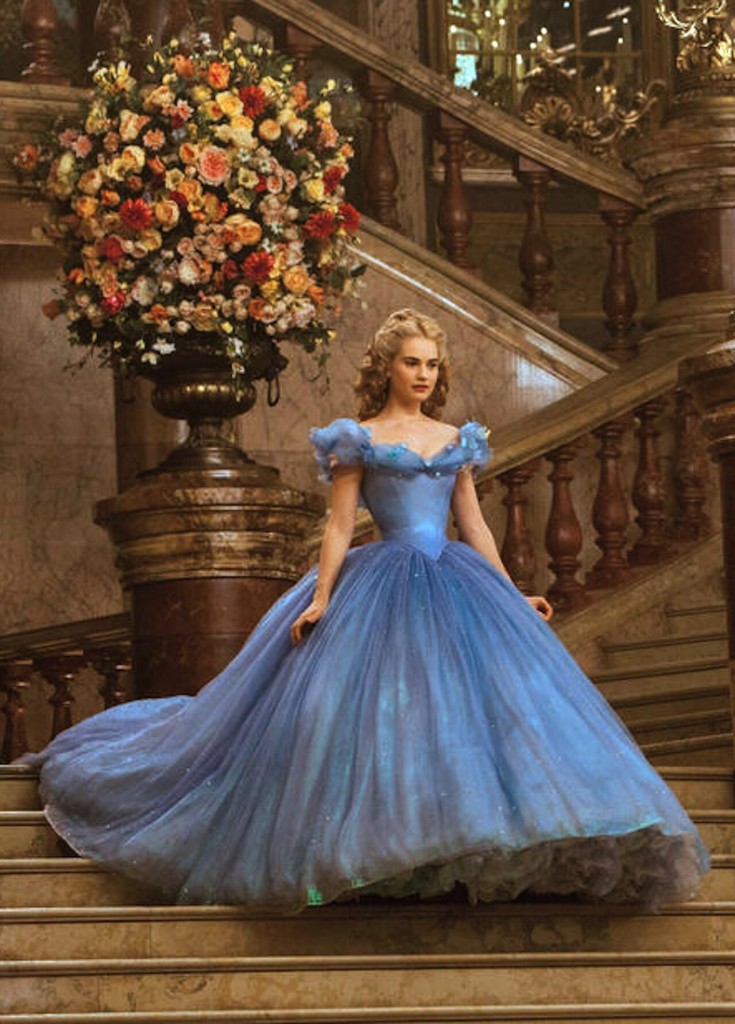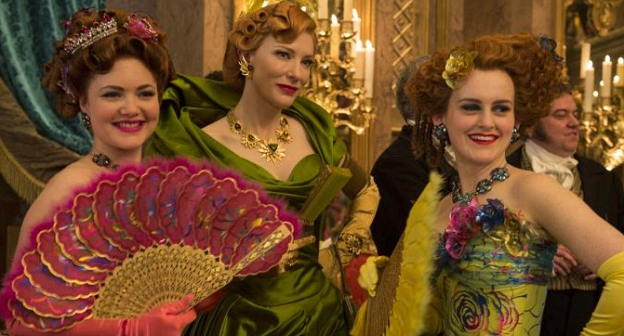 Call me a curmudgeon but I prefer my fairy tales pure. Recent action-hero pics like “Jack the Giant Slayer” and “Snow White and the Huntsman” have proved bloated bores. And though the feminist revisionism of such vehicles as “Malificent,” “Frozen,” and “Ever After” may be admirable, it’s like slapping Band-Aids over these regressive myths’ tumors. Better to let fairy tales be fairy tales — and follow up with our children afterward lest they confuse them for reality.
Call me a curmudgeon but I prefer my fairy tales pure. Recent action-hero pics like “Jack the Giant Slayer” and “Snow White and the Huntsman” have proved bloated bores. And though the feminist revisionism of such vehicles as “Malificent,” “Frozen,” and “Ever After” may be admirable, it’s like slapping Band-Aids over these regressive myths’ tumors. Better to let fairy tales be fairy tales — and follow up with our children afterward lest they confuse them for reality.
“Cinderella,” Disney’s latest live-action offering, is back to basics in the best of ways. Written by Chris Weitz (“About a Boy”) and directed by Kenneth Branagh as if it were a studio movie made in Hollywood’s Golden Age, it contains no winks at the grownups nor any pop culture references to hip the joint up. (A preceding “Frozen” short provides both.) In fact, this update on the 1950 animated classic seems to target tweens; its slow-moving grace and emphasis on morality and love rather than magic and musical numbers did not sit well with the small kids in the screening I attended. (The rest of us may watch in peace.)
With her heavy brows offset by a bounty of platinum curls and a waist so tiny that it’s made headlines, Lily James is Ella — she’s not referred to as Cinderella until late in the game — and she’s lovely inside and out. Insert Moral #1: True Beauty Is Not Skin-Deep. To underscore this point, her evil stepmother, Lady Tremaine, is played by sylph-like Cate Blanchett, and her mean-girl stepsisters Anastasia and Drisella are played by those dimpled dolls Holliday Grainger and Sophie McShera, respectively. But first, an unusually long primer in Ella’s Eden of a childhood: As the apple of her parents’ eyes, she is taught to “have courage and be kind.” (Insert Moral #2.) Upon her mother’s death, Ella’s father (Ben Chaplin) is so bereft that he views his second marriage as little more than a business arrangement. It’s no wonder he dies of a broken heart, nor that Lady Tremain resents the stepchild with whom she’s saddled.
So much of this “Cinderella” focuses on the dangers of passive-aggression, especially among women. (Insert Moral #3.) Ella rarely expresses her frustration directly, and Lady Tremaine tortures Ella mostly through suggestion rather than might. She doesn’t banish the girl to the attic so much as appeal to her sweet nature, murmuring that she “might want to give up her room” so her stepsisters won’t have to share one. It’s only when Ella finally becomes proactive — sewing her own dress so she can attend the Prince’s ball — that the woman turns outright wicked, her eyes glittering with sadistic pleasure. Blanchett’s eyes do a lot of glittering here, actually. With elegantly clad curves and malevolent purrs, she’s not so much campy as catty. (It’s a far more compelling performance than her Oscar-winning turn in the overrated “Blue Jasmine.”)
As “Cinderella”‘s resident fairy godmother, Helena Bonham Carter delivers all the camp we could ever desire, anyway. Freed from the shackles of Tim Burton’s self-conscious wackiness, she sinks a dazzling white overbite into this role, supplying the requisite magic with great comic chops (pun intended; sorry) and a desultory wave of her wand. Only then do Ella’s animal companions talk, by the way; those uber-helpful, oft-parodied Disney birds seem to have flown the coop.
Also in scant evidence: the men. “Kit,” as the Prince (Richard Madden) is jauntily called, may share Ella’s strong ethics but he is awfully toothless. So is his father, the invalid King (Derek Jacobi), though Stellan Skarsgård’s mustachio-twirling Grand Duke proves a grand match for Lady Tremaine’s eee-vil. It hardly matters, though. The Cinderella story has always been about the women and the glamour, and both abound here.
If a camera can take cues from the movement of a dress, it does so in the Ball scene. Swooping and swirling, we experience Ella’s rapture first-hand. Sandy Powell’s costumes and Dante Ferretti’s production design are in full glory, with a rainbow of ballgowns and furnishings that puts the hand-painted original to shame. A stunning dance sequence will satisfy even the most demanding of romantics, especially when we zoom in on the Prince’s gloved hand as he clasps Ella. We’re all so busy swooning we scarcely mind that she forgives her stepmother. (Insert Moral #4.)
No one’s going to claim this film pushes any envelopes, but that’s the point, isn’t it? Jill shall have her Jack, this good, slightly bland girl shall have her good, slightly bland prince, and we shall have this good, slightly bland “Cinderella.” Sometimes that’s more than enough. (Insert Moral #5. )
This was originally published in Word and Film.
